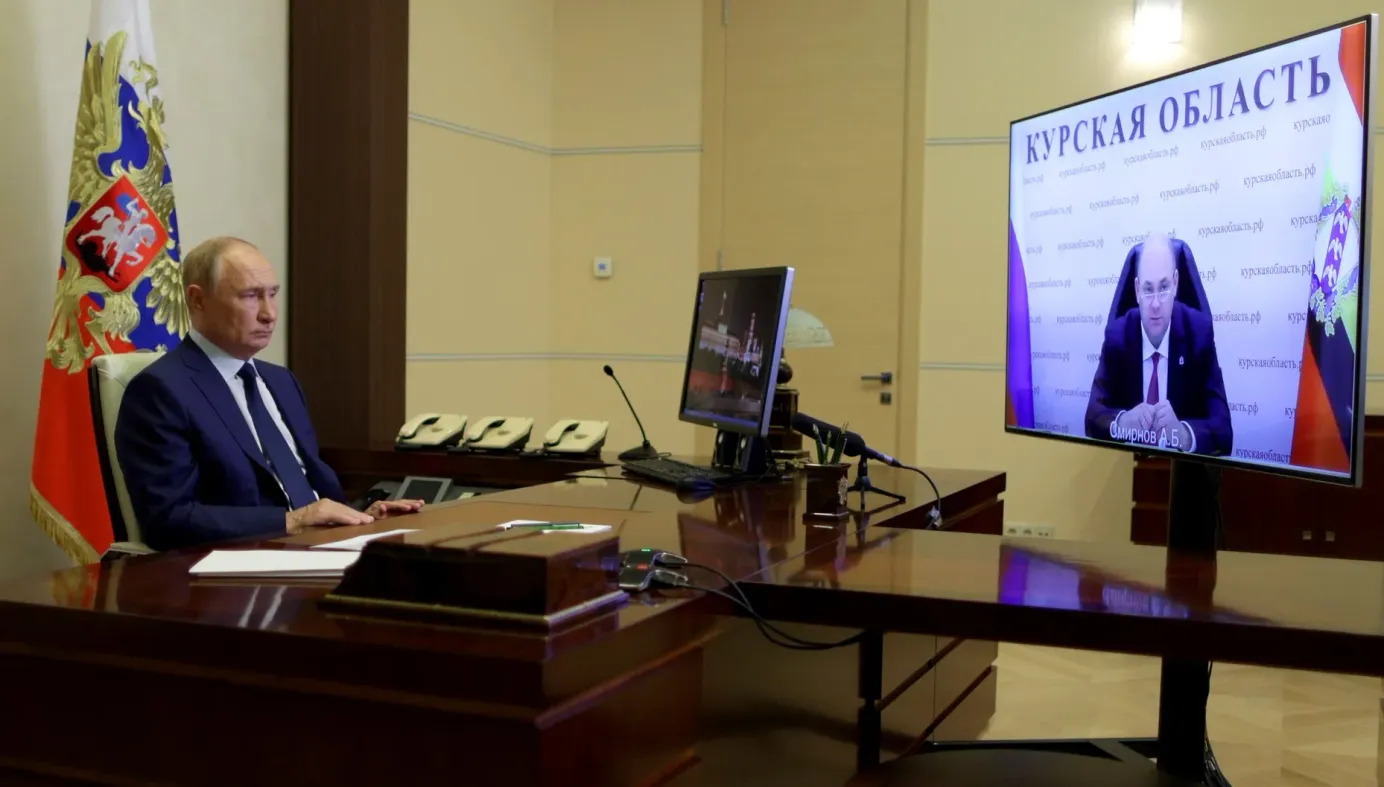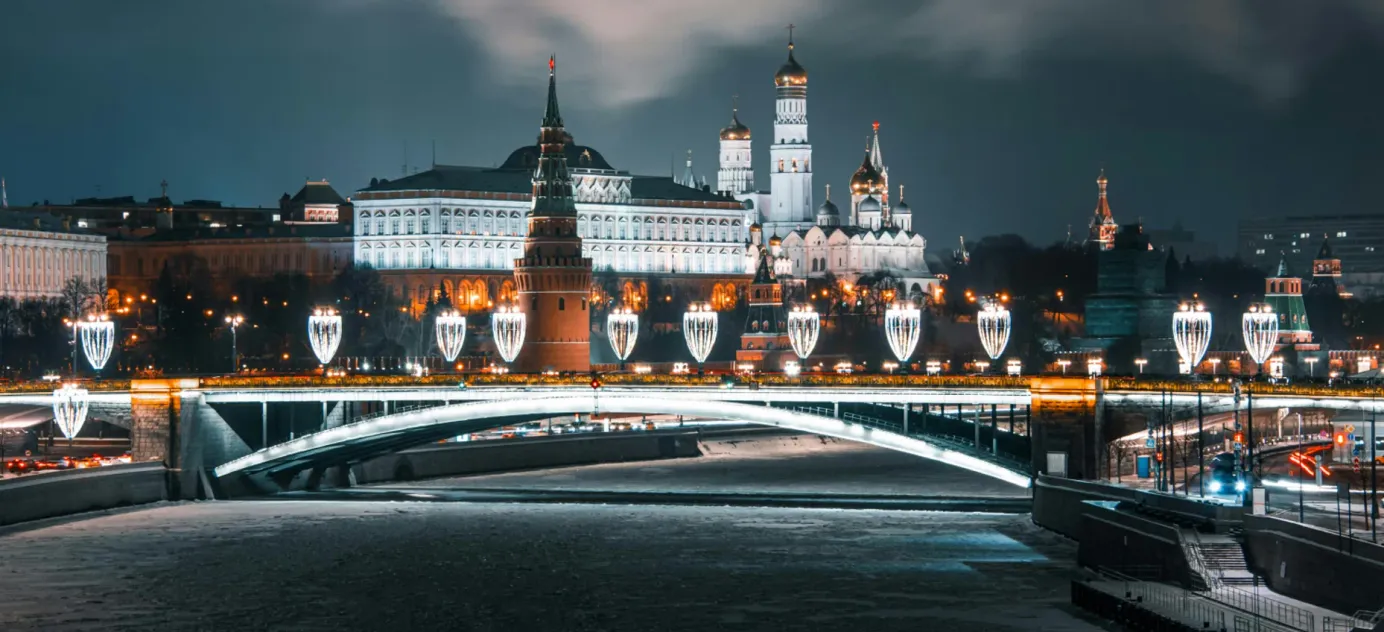
Russia’s authorities distance themselves from Ukraine’s counter-invasion
It has already been a week since Ukrainian troops and tanks crossed into Russian territory, opening a new offensive on the Kursk border region, a small territory in southwest Russia. Excluding some short-lived border raids by militia groups, this is the first full-scale military incursion by Ukraine’s troops since Moscow invaded in February 2022. By all accounts Russia’s army was unprepared for the attack while the Kremlin, in keeping with tradition, spent a week trying to ignore it.
- Ukrainian troops broke into the Kursk region on Aug. 6, managing to advance several kilometers into Russia and capturing the Sudzha gas metering station, the last stop for Russian gas on its way to Europe via Ukraine. Despite the war, Russia has continued sending gas through the Sudzha point, and prices for gas in the EU have surged amid reports Ukraine could have captured the station. It’s still unclear how many Ukrainian soldiers are taking part in the operation. It could be “thousands” according to an anonymous, high-level source in Kyiv. Ukraine’s commander-in-chief claimed Monday that Kyiv’s forces had seized 1,000 square kilometers inside Russia — a lot by the standards of this conflict, which has been in something of a stalemate for months, even if it represents just 3% of the Kursk region’s territory.
- So far, the operation has brought obvious positives for Ukraine. Its soldiers are on maneuvers in enemy territory, rather than facing creeping losses in the eastern Donbas. They are drawing Russian resources away from other areas of the frontline and raising morale across the entire armed forces and many parts of society. They are also demonstrating their military potential to NATO partners. However, the offensive likely carries some risks as well — including the diversion of well-trained units from defensive roles elsewhere on the battlefield and the likelihood of high, potentially unsustainable, losses (as a rule, attacking forces suffer more human casualties). The diversion of Ukrainian soldiers prompted many Western military analysts to brandthe operation “high risk.” At a time when Russian troops, which have a significant numerical advantage, are making advances in the Donetsk region, Ukraine is throwing its strategic reserves into an attack in the opposite direction. That will require tangible results to justify the decision.
- Immediately after the incursion it became clear that there were insufficient Russian reserves in Kursk to withstand the attack. However, Russian authorities tried to claim “victory” no fewer than six times, saying on multiple occasions that the Ukrainian forces had been stopped from driving deeper into Russian territory. On the first day of the incursion, the defense ministry said its troops had completely quashed the advance, before removing that claim in an edited social media post. In the last few days the authorities seem to have settled on their talking points, with propaganda outlets and officials now focusing on how many Ukrainian soldiers have been “destroyed” (more than a thousand, the defense ministry claims) and successful airstrikes on military hardware.
- Putin on Monday held a major televised meeting in which for the first time officials gave detailed information about the extent of Ukraine’s advance — 28 settlements have been seized, Kursk Governor Alexei Smirnov said, and Ukrainian forces had penetrated 12 kilometers deep along a 40-kilometer stretch of border. Ukraine’s commander-in-chief said a few hours later that Kyiv’s forces controlled 1,000 square kilometers of Russian territory — twice as much as what Russia admitted to.
- While the Kursk region found itself at war, Russia’s defense ministry launched a PR campaign to highlight the efforts being made to protect the region. Federal TV showed clips of tanks that allegedly occupied firing positions in the region — but had covers on their muzzles. They also showed what claimed to be live footage of Russian military equipment on the move, prompting some pro-war bloggers to criticizethem for “openly informing the enemy” about Russian positions, while others pointed out that the hardware displayed was 60 years old. The defense ministry also published several clips that it said showed strikes on Ukrainian forces in Kursk Region, although in fact the footage was filmed from earlier Russian attacks on Ukrainian territory.
- In Russian pro-war circles, the dominant mood has been depression after yet another apparent military failure from Moscow. “You strike at Odesa, Kharkiv, sometimes even Kyiv, yet you miss this on your border?” bemoaned pro-war military blogger Anastasia Kashevarova. “We can’t even admit to a full-on invasion, instead declaring some kind of ‘emergency situation,’ previously only used in response to freezing weather,” she said, referring to authorities declaring a “federal emergency” in the region, a response level sometimes used to marshal resources to a natural disaster or extreme weather. “The Kursk Region is just a bit frosty, you know, there’s nothing to worry about,” saidanother major pro-war Telegram channel.
- The Ukrainian operation is the first major incursion into Russian territory since World War II. Nonetheless, Vladimir Putin has not given any kind of address to the nation (as he did in 2023 when there was an apparent threat of a march on Moscow by disaffected Wagner Group troops). In a meeting with members of the government, the president initially called the invasion a “provocation” by the “Kyiv regime” in brief opening remarks before moving on to their scheduled agenda. Later in the week during a video call with the acting governor in Kursk, which was broadcast on several federal TV channels, Putin never spoke of an “invasion” or major Ukrainian attack, instead referring to “the current situation.”
- Putin promised to pay 10,000 rubles ($115) to anyone who had to leave the border areas. By comparison, people who sign up for the army from Kursk are paid 40 times more in a signing-on bonus, while those enlisting from Moscow are awarded 190 times more. Such small payments will not be enough for many: eye-witnesses said that the center of Sudzha, a border town that has been one of the focuses of the incursion was “turned to dust” after shelling. They also complained that there was no centralized evacuation, with many left to fend for themselves and sort their own way out of under-fire villages.
Why the world should care:
Ukrainian forces have advanced dozens of kilometers into Russian territory in a shock border incursion that is the most sustained attack on Russia by a foreign army in 80 years. But this is apparently not the Kremlin’s biggest concern. In his usual manner, Vladimir Putin tried to distance himself from any bad news that might hurt his ratings and entrusted people around him to deal with the issue. It’s possible that Ukrainian troops will soon be ejected from Russian territory, but this counter-invasion clearly shows how secure Russia’s borders really are in the third year of its full-scale war on a neighboring country.





